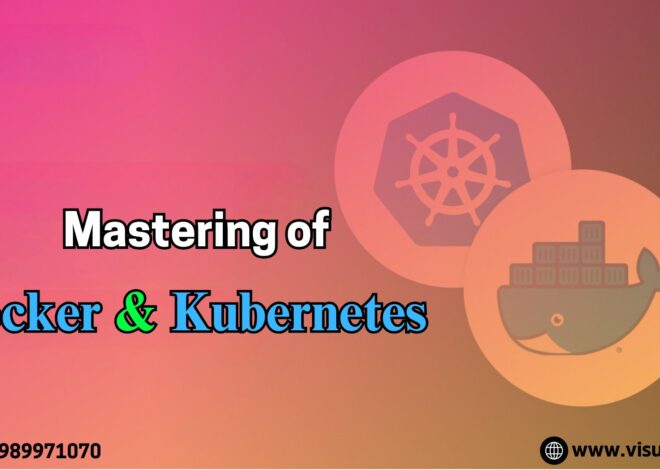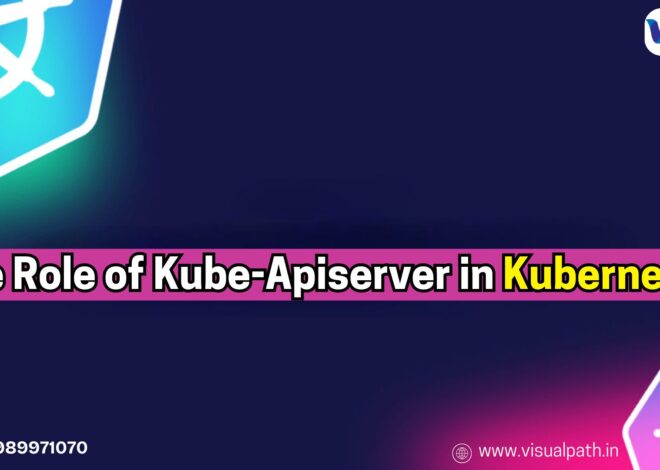Introduction:
Kubernetes, the leading container orchestration platform, has revolutionized the way applications are deployed and managed. However, managing Kubernetes deployments can still be challenging. Docker and Kubernetes Training
What is ArgoCD?
ArgoCD is a Kubernetes-native continuous delivery tool that follows the GitOps methodology. GitOps is a paradigm that uses Git repositories as the single source of truth for declarative infrastructure and applications. With ArgoCD, you can define your desired application state in Git repositories, and ArgoCD will ensure that the current state of your Kubernetes clusters matches the desired state described in your Git repositories.
Benefits of Integrating ArgoCD with Kubernetes:
Automated Deployments: ArgoCD automates the process of deploying applications to Kubernetes, reducing the need for manual intervention and minimizing human errors.
Declarative Configuration: By using declarative configurations stored in Git, you can version control your application deployments, making rollbacks and audits straightforward. Kubernetes Online Training
Continuous Syncing: ArgoCD continuously monitors your Git repositories and your Kubernetes clusters, ensuring that any drift between the desired state and the actual state is corrected automatically.
Enhanced Security: Since ArgoCD operates based on Git repositories, you can leverage Git’s access control and audit capabilities to secure your deployment workflows.
Steps to Integrate ArgoCD with Kubernetes:
Prerequisites:
Before you start, ensure you have the following:
A running Kubernetes cluster. kubectl installed and configured to interact with your Kubernetes cluster. A Git repository containing your Kubernetes manifests or Helm charts.
Install ArgoCD:
The first step is to install ArgoCD in your Kubernetes cluster. You can do this by applying the ArgoCD installation manifests provided by the ArgoCD team. This involves creating the necessary namespaces, roles, role bindings, services, and deployments for ArgoCD to operate. Docker Online Training
Access ArgoCD:
Once ArgoCD is installed, you can access its web UI to manage your applications. You will need to retrieve the initial password for the admin user and the URL for the ArgoCD server. This information is typically available in the Kubernetes secrets created during the installation process.
Configure a Git Repository:
Next, you need to configure a Git repository that contains your application manifests or Helm charts. This repository will serve as the source of truth for your deployments. Ensure that the repository structure aligns with ArgoCD’s expectations, typically with a directory for each application environment (e.g., staging, production).
Create an ArgoCD Application:
An ArgoCD Application represents a collection of Kubernetes resources defined in a Git repository. To create an application, you can use the ArgoCD web UI, CLI, or declarative YAML manifests. Specify the Git repository URL, the path to the manifests, the target Kubernetes cluster, and the namespace where the resources should be deployed.
Conclusion:
Integrating ArgoCD with Kubernetes brings the power of GitOps to your CI/CD pipelines, enhancing automation, security, and efficiency. By following the steps outlined above, you can streamline your Kubernetes deployments, reduce manual errors, and achieve a more reliable and scalable software delivery process.
Visualpath is the Leading and Best Institute for learning Docker and Kubernetes Online in Ameerpet, Hyderabad. We provide Docker Online Training Course, you will get the best course at an affordable cost.
Attend Free Demo
Call on – +91-9989971070
Visit : https://www.visualpath.in/DevOps-docker-kubernetes-training.html




